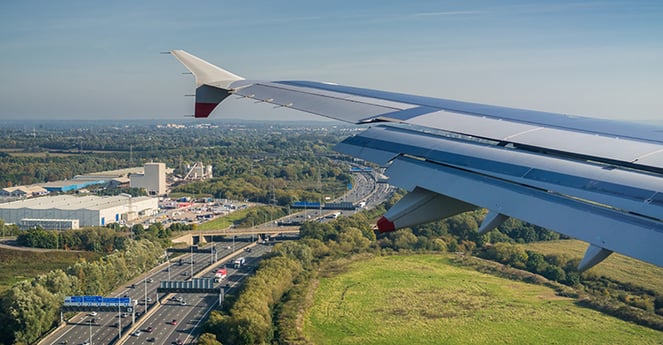Heathrow’s expansion puts West London’s industrial market in play

The Government’s renewed support for Heathrow’s third runway marks a significant milestone for UK infrastructure. But for industrial occupiers in West London, it signals a decade of disruption, one that could impact their business operations and investment strategies if they fail to act now.
With over 850,000 sq. ft of industrial space sitting within the proposed development area, businesses caught in the expansion zone face a difficult choice: stay put and risk forced relocation or secure alternative space before the market tightens. The challenge is that Heathrow’s expansion, if it proceeds at all, will take at least a decade to complete. That means prolonged uncertainty, potential compulsory purchases, and an increasingly competitive market for available industrial space.
A supply-constrained market under pressure
West London’s industrial market is already struggling with an acute lack of supply. Avison Young’s research indicates that over 5% of the region’s 20,000 sq. ft-plus stock falls within the identified third runway zone. If this space is lost, occupiers – currently including logistics providers, freight transportation and data centre operators – will have fewer options, intensifying competition for property in surrounding areas.
Crucially, this pressure is being compounded by the rise of data centres. Activity around Heathrow and the Iver sub-station is accelerating the displacement of existing industrial occupiers and further eroding industrial supply. Prime examples include Ridgeway Industrial Estate in Iver, where Rhodes Transport has moved to a 40,000 sq. ft. unit on Segro’s Slough Trading Estate and Immediate Transport has relocated to a 50,000 sq. ft. unit in Reading. Meanwhile, the International Trading Estate in Southall, just north of Heathrow, has been acquired by Global Technical Realty (GTR) Data Centres and is expected to displace over 10 industrial tenants by 2027, once planning and power are secured.
Nearby prime industrial hubs are seeing increased demand from businesses seeking long-term stability. But these markets, too, have limited supply, meaning options will become scarcer and more expensive. For businesses that delay their decisions, the risk isn’t just Heathrow’s expansion, it’s being locked out of viable relocation opportunities altogether.
The investment opportunity
The anticipated displacement of industrial occupiers presents a clear opportunity for property owners in the immediately surrounding areas. Increased demand will drive higher rents, shorter void periods, and reduced incentives, strengthening long-term investment returns.
Industrial rents in nearby areas already reflect strong demand: Park Royal commands around £31 per sq. ft, with Uxbridge ranging from £27–£30 per sq. ft and Slough from £23–£28 per sq. ft. As available space tightens, these figures are likely to rise further, offering investors both income resilience and the prospect of above trend capital appreciation.
To illustrate the scale of the opportunity for capital appreciation, consider a five-year investment period. Maintaining a constant equivalent yield, a 2% per annum rental growth improvement could drive a capital value gain of around 7.5%. If initial rents rise by 5% as well, the capital value gain could exceed 12%. This is a rare opportunity to secure value appreciation in an already high-performing sector.
Why occupiers and investors must act now
The third runway may still be subject to legal and political hurdles, but the market impact is happening now. Businesses that move early will secure more favourable terms, while those who wait risk higher costs and fewer options.
For investors and landlords, the runway expansion is a catalyst for change. Those who strategically position their assets now will benefit from increased demand, rental growth, and long-term value gains with early signs the market is adjusting to the pressures of displacement.
Heathrow’s third runway is a long-term infrastructure project, but the impact on West London’s industrial market is immediate. For occupiers waiting is not a strategy, it’s a liability. For landlords in the surrounding areas and investors looking to capture capital appreciation, now is the time to secure a competitive position before the window of opportunity closes.
This article was originally published in Green Street News. It can be viewed here.

